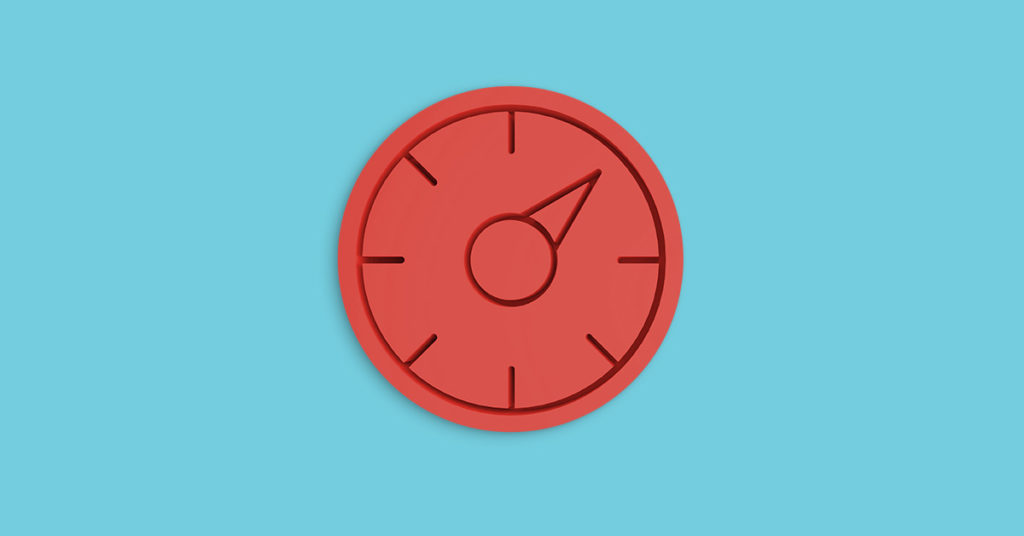
Why Doesn’t Fiber Get Jammed at Rush Hour?
There are a lot of great reasons for choosing fiber optic internet. Number one is speed, of course. And if you get frustrated when your DSL or copper internet slows at certain times of the day, here’s how fiber can beat that problem, too.
What’s internet rush hour?
Rush hour doesn’t just happen on roads and expressways; internet service has peak times that can slow down traffic, too. Before the pandemic, weekday evenings between 6 p.m. and 11 p.m. were considered peak internet hours, with usage spiking as people returned home from work and school and got online at the same time. Now that more people are working from home, rush hour is becoming less predictable and can happen during the daytime, as remote workers connect and collaborate through online methods.
You may wonder why the internet slows down during rush hour, given traffic is virtual. Just like roads, local networks that service neighborhoods can only handle a certain amount of data. Activities that require more bandwidth, like streaming movies, participating in online gaming and joining a video conference, can create a bottleneck that results in sluggish connections for anyone. People who live in highly populated areas or who use the same internet service provider (ISP) as many of their neighbors, which is common in high-density residences like condominium or apartment complexes, may experience more network congestion because there are more users on the shared network.
How fiber solves the problem
Fiber optic networks are next-generation technology that eliminates the limitations that plague traditional cable service and create rush hour slowdowns. In fact, fiber is the fastest wired internet connection currently available with the ability to transmit a lot of data with very little latency.
Fiber is built differently
Traditional cable internet service is delivered through coaxial copper wires. When traffic is high, the metal wires can heat up and weaken the signal, putting the data transfer at risk of interference. During peak times for internet usage, ISPs use “throttling” to prevent overloads that could cause an outage, lowering cable speed to ration the service and slowing down the user experience. Cable internet also relies on electricity, which can make it susceptible to disruption if electric usage is high, such as during a hot summer when more people are running air conditioning.
Fiber internet service, on the other hand, uses a collection of ultra-thin clear glass or plastic filaments that are encased in cladding. Data is transmitted through the fibers with a system of modulated light signals that can travel long distances, quickly and clearly. Fiber optic technology was first used to improve telephone communication in 1988 with a cable laid across the Atlantic Ocean.
How fast can fiber go?
With fiber internet, data travels through beams at about 70% the speed of light, which can be as much as 20 times that of data traveling through copper cable. For example, downloading a two-hour HD movie over cable internet would take about seven minutes. With fiber optic internet, the process would take about 85 seconds. Because it’s faster and able to maintain optimum speed, fiber internet providers don’t need to throttle or implement data caps on users to preserve overall bandwidth. With no limits, users can connect as many devices and use as much data as they wish without worrying about internet slowdown.
ISPs offer fiber optic internet speeds as high as 2 gigabits. Cable internet has a speed capable range from 10 to 500 Mbps for downloads and 5 to 50 Mbps for uploads. Most users do more downloading than uploading, which is why ISPs dedicate more of their bandwidth to downloads. Because fiber internet systems aren’t at risk of being overloaded, ISPs provide virtually the same speed for downloading and uploading, making it easier and faster to share large files with coworkers or friends.
Fiber travels faster over longer distances
Another reason that fiber internet can maintain its speed during peak times is because the signal can naturally travel a longer distance. Data traveling through cable internet can go a maximum of 100 meters without the use of boosters. Data traveling through fiber optic service, however, can go as far as 40 kilometers without requiring a booster. Data traveling over long distances within cable can deteriorate and become distorted, while fiber can easily transmit data a farther distance without risk of the information breaking down along the way.
Once you have fiber, it’s more durable
Finally, the physical makeup of fiber helps it maintain speed and service through rush hour. Fiber is more durable than cable’s copper, which can become damaged in harsh weather conditions. Fiber is immune to environmental and network factors that can impair copper wire. For example, copper lines can become corroded or experience interference, which can slow down or corrupt the flow of information. Because fiber is made of glass or plastic, it’s less susceptible to temperature variations or weather conditions.
Will Frontier Fiber keep my connection flowing?
Absolutely! Frontier Fiber is built to the exacting standards using hair thin strands to transmit data to and from your home as pulses of light. No traffic jams will get in your way. Plus it’s reliable, weather resistant and utterly fast. That’s how you want to live your best life. Ready for Frontier Fiber? Find out when it’s traveling to your neighborhood here.


Join the conversation